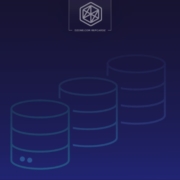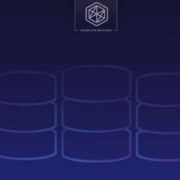Distributed SQL databases combine the resilience and scalability of a NoSQL database with the full functionality of a relational database. In this Refcard, we explore the essentials to building a distributed SQL architecture, including key concepts, techniques, and operational metrics.
Source de l’article sur DZONE
Articles
- PDO allows you to work with different databases, such as: MYSQL, Oracle, PostgreSQL and many others.
- PDO allows you to work with a prepared statement
Connecting to a Database Using PDO
xxxxxxxxxx
/ / MuSQL
$Database = new PDO ("mysql: host = $ host; dbname = $Databasename", $username, $password);
/ / PostgreSQL
$Database = new PDO ("pgsql: host = $ host; dbname = $Databasename", $username, $password);
/ / MS SQL
$Database = new PDO ("mssql: host = $ host; dbname = $Databasename", $username, $password);
/ / SQLite
$Database = new PDO ("sqlite: my / database / path / database.db");
xxxxxxxxxx
try {
$Database = new PDO ("mysql: host = $ host; dbname = $Databasename", $username, $password);
}
catch (PDOException $ e) {
echo "Unable to connect to database";
}
Change Data Capture Architecture Using Debezium, Postgres, and Kafka
was a tutorial on how to use Debezium for change data capture from Azure PostgreSQL and send them to Azure Event Hubs for Kafka – it used the wal2json output plugin.
What About the pgoutput Plugin?
This blog will provide a quick walk through of how to pgoutput plugin. I will not be repeating a lot of details and use containerized versions (using Docker Compose) of Kafka connect, Kafka (and Zookeeper) to keep things simple. So, the only thing you need is Azure PostgreSQL, which you can setup using a variety of options including, the Azure Portal, Azure CLI, Azure PowerShell, ARM template.
In recent years, NoSQL distributed databases have become common, as they are built from the ground up to be distributed. Yet they force difficult design choices such as choosing availability over consistency, data integrity, and ease of query to meet their applications’ need for scale. This Refcard serves as a reference to the key characteristics of distributed SQL databases and provides information on the benefits of these databases, as well as insights into query design and execution.
Source de l’article sur DZONE
As more organizations look to migrate their databases to the cloud, what does this mean for developers? We at DZone believe there is no one better to ask than you! Tell us about your experiences with cloud databases by taking this 5 minute survey!
 Over the next two weeks, we plan to survey hundreds of software developers about their experiences with cloud databases. The key findings from the survey will be found in our Cloud Database Trend Report to be released February 19. It is our hope that we can identify some of the key trends happening in the space to help our community stay ahead of the curve.
Over the next two weeks, we plan to survey hundreds of software developers about their experiences with cloud databases. The key findings from the survey will be found in our Cloud Database Trend Report to be released February 19. It is our hope that we can identify some of the key trends happening in the space to help our community stay ahead of the curve.

Policemen, doctors, lawyers, scientists, teachers: these are the professions that we often see in Hollywood movies. But are movies also trying to show what the work of data analysts looks like? Here is a list of six movies in which screenwriters, directors, and producers decided to cast SQL and databases in the main roles.
Data analysis is most often associated with business, reporting, and making key decisions for the company. Today it is part of many organizations’ daily life, so it’s no wonder that this topic often appears in movies.
Covers data model, architecture, partitioning, strategies, indexes, libraries in various languages, and more.
Source de l’article sur DZONE







